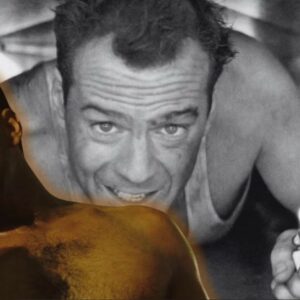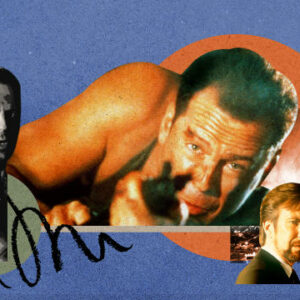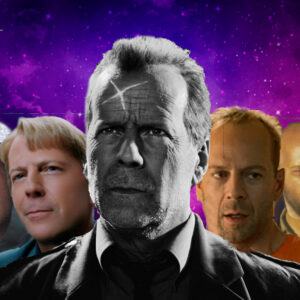Ryan Gosling’s journey through the world of cinema has been nothing short of transformative. From his early roles as a fresh-faced actor to becoming one of the most versatile and influential stars of modern film, Gosling’s career is a compelling case study in the evolution of contemporary cinema. His impact on trends, genre exploration, and on-screen style has not only redefined the roles of male leads but has also influenced broader cultural and cinematic trends.
Early Career and Rise to Fame
Ryan Gosling’s acting career began in the early 1990s, but his breakthrough came with his role in the television series “The Mickey Mouse Club” and later, “Breaker High.” These early roles, though modest, showcased his potential and set the stage for a more significant breakthrough. It was his performance in the critically acclaimed film “Half Nelson” (2006) that truly catapulted him into the spotlight. Gosling’s portrayal of a troubled middle-school teacher battling addiction earned him an Academy Award nomination, marking a pivotal moment in his career.
This early success was not merely a stroke of luck; it was a reflection of Gosling’s commitment to his craft. His nuanced performance in “Half Nelson” demonstrated an ability to tackle complex characters, a trait that would become a hallmark of his career. The success of “Half Nelson” not only propelled him into the upper echelons of Hollywood but also paved the way for diverse and challenging roles, establishing Gosling as a significant figure in modern cinema.
Diverse Roles and Genre Exploration
One of the defining features of Ryan Gosling’s career is his remarkable versatility. Over the years, Gosling has delved into a myriad of genres, each time bringing a unique flavor to his roles. His performance in “The Notebook” (2004) established him as a leading man in romantic dramas, while his role in “Drive” (2011) showcased his ability to excel in action films with a blend of cool detachment and intense emotion.
Gosling’s transition into different genres has influenced how male actors are cast and the types of roles that are considered suitable for leading men. His ability to seamlessly move between romantic leads, dramatic characters, and action heroes has contributed to a trend where actors are no longer confined to a single type of role or genre. This genre-blending approach has opened up new possibilities for storytelling and character development in modern cinema.
Style and Persona
Ryan Gosling’s on-screen style and persona are crucial components of his cinematic impact. Known for his brooding intensity and understated charm, Gosling has crafted a distinctive on-screen presence that has resonated with audiences and critics alike. His style, marked by a blend of rugged masculinity and emotional depth, has become a template for modern male leads.
Gosling’s influence extends beyond his roles; it encompasses the very archetypes he portrays. His characters often embody a mix of vulnerability and strength, challenging traditional notions of masculinity in film. This has led to a broader acceptance of complex, multifaceted male characters in contemporary cinema, influencing both the roles written for actors and the performances expected from them.
Collaborations with Renowned Directors
Ryan Gosling’s career is marked by several key collaborations with renowned directors, which have significantly impacted modern cinematic storytelling. His work with Nicolas Winding Refn on “Drive” (2011) and “Only God Forgives” (2013) introduced a new era of stylized, character-driven narratives. These films showcased Gosling’s ability to embody enigmatic and often silent protagonists, pushing the boundaries of traditional storytelling.
Another notable collaboration is with Damien Chazelle on “La La Land” (2016). This film, a modern musical that pays homage to classic Hollywood, demonstrated Gosling’s versatility not only as an actor but also as a musician. His performance, alongside co-star Emma Stone, brought a fresh perspective to the musical genre, blending contemporary sensibilities with nostalgic elements.
These collaborations have not only shaped Gosling’s career but have also influenced the direction of modern filmmaking. By working with innovative directors, Gosling has been part of projects that challenge conventional norms and explore new narrative techniques, contributing to the evolution of cinematic storytelling.
Contributions to Indie and Art House Cinema
Ryan Gosling’s involvement in independent and art house cinema has been instrumental in the resurgence of these genres. Films such as “Blue Valentine” (2010) and “The Place Beyond the Pines” (2012) highlight his commitment to projects that push artistic boundaries and explore complex human experiences. His choice to work on such films has not only brought them mainstream attention but has also highlighted the value of independent storytelling in a market dominated by blockbuster films.
Gosling’s role in supporting and starring in indie films has played a significant part in their critical success and popularity. His involvement has helped to bridge the gap between mainstream audiences and art house cinema, demonstrating that there is a broad appetite for diverse and innovative storytelling.
Cultural and Fashion Influence
Beyond his cinematic contributions, Ryan Gosling has also made a significant impact on fashion and cultural trends. His distinctive style, characterized by a mix of classic and modern elements, has influenced how male actors are perceived and styled in the media. From his sharp suits on the red carpet to his casual yet polished everyday wear, Gosling’s fashion choices have set trends and reflected a broader shift in male style.
The public’s fascination with Gosling’s image has been reflected in advertising and popular media, where his persona has been used to sell everything from clothing lines to luxury goods. His style has become a touchstone for contemporary masculinity, blending sophistication with a relaxed, approachable demeanor.
Thematic Trends and Societal Impact
Examining the recurring themes in Gosling’s filmography reveals a deep connection to contemporary societal issues. Many of his roles explore themes such as identity, vulnerability, and the struggle for personal redemption. Films like “The Ides of March” (2011) and “First Man” (2018) tackle political and historical themes, reflecting a societal interest in complex, multi-dimensional narratives.
Gosling’s choice of roles often mirrors public sentiment and evolving societal concerns. By taking on projects that address pressing issues and offer nuanced portrayals of human experiences, Gosling has contributed to a broader dialogue about these topics in cinema.
Future Impact and Legacy
Looking ahead, Ryan Gosling’s career is poised to continue influencing modern cinema. His ability to adapt and excel across different genres and roles suggests that he will remain a significant force in the industry. As trends in filmmaking continue to evolve, Gosling’s approach to selecting and portraying diverse characters will likely shape the future direction of cinematic storytelling.
His lasting legacy is already evident in how he has redefined the role of the male lead and influenced the types of stories being told. The impact of his work extends beyond his individual performances, shaping industry practices and audience expectations.
Conclusion
Ryan Gosling’s contributions to modern cinema are both extensive and profound. His ability to seamlessly transition between genres, his collaborations with innovative directors, and his influence on fashion and cultural trends have all marked him as a pivotal figure in contemporary film. As cinema continues to evolve, the imprint of Gosling’s work will undoubtedly continue to shape trends and inspire future generations of filmmakers and actors. His career is a testament to the power of versatility, artistic integrity, and the enduring impact of cinematic storytelling.





